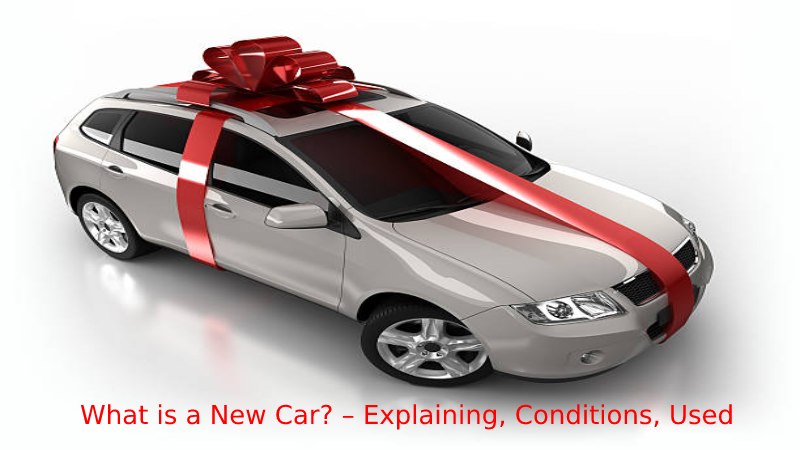Table of Contents
A New Car – Explaining – The Dream of Long Drive
A new car is second only to a home as many consumers’ most expensive purchase. According to the National Automobile Dealers Association, the average price of a new car sold in the United States is about $30,000. That’s why it’s essential to make an intelligent deal.
Do some research. Car model and options you want and how much you’re willing to spend. You’ll be less likely to feel pressured into making a hasty or expensive decision at the showroom and more likely to get a better deal.
Consider These Suggestions for Buy A New Car
Check publications and websites that discuss new car features and prices. These may provide information on the dealer’s costs for specific models and options. Shop around to get the best possible price by comparing models and prices in ads and dealer showrooms. You also may want to contact car-buying services and broker-buying services to make comparisons.
Plan to negotiate on price. Dealers may be willing to bargain on their profit margin, often between 10 and 20 per cent. Usually, this is the difference between the manufacturer’s suggested retail price (MSRP) and the invoice price. Because the price is a factor in the dealer’s calculations regardless of whether you pay cash or finance your car and affect your monthly payments, negotiating the price can save you money.
Consider ordering your new car if you don’t see what you want on the dealer’s lot. This may involve a delay, but cars on the lot may have options you don’t want, which can raise the price. However, dealers often want to sell their current inventory quickly, so you may be able to negotiate a good deal if an in-stock car meets your needs.
Learning the Terms & Conditions for Buy
Negotiations often have a vocabulary of their own. Here are some terms you may hear when you’re talking price.
The Invoice Price is the manufacturer’s initial charge to the dealer. This usually is higher than the dealer’s final cost because dealers receive rebates, allowances, discounts, and incentive awards. Generally, the invoice price should include freight (also known as destination and delivery). If you’re buying a car based on the invoice price (for example, “at invoice,” “$100 below invoice,” “two per cent above invoice”) and if freight includes, make sure freight isn’t added again to the sales contract.
Base Price is the cost of the car without options but includes standard equipment and factory warranty—this price is printed on the Moroney sticker. Moroney Sticker Price (MSRP) shows the base price, the manufacturer’s installed options with the manufacturer’s suggested retail price, the manufacturer’s transportation charge, and the fuel economy (mileage). Affixed to the car window, this label is required by federal law and may be removed only by the purchaser.
Dealer Sticker Price, usually on an additional sticker, is the Moroney sticker price plus the suggested retail price of dealer-installed options, such as additional dealer mark-up (ADM) or additional dealer profit (ADP), dealer preparation, and undercoating.
Financing Your Car
If you decide to finance your car, be aware that the financing obtained by the dealer, even if the dealer contacts lenders on your behalf, may not be the best deal you can get. Contact lenders directly. Compare the financing they offer you with the financing the dealer offers you. Because offers vary, shop around for the best deal, comparing the annual percentage rate (APR) and the loan length. When negotiating to finance a car, be wary of focusing only on the monthly payment. The total amount you will pay depends on the price of the car you negotiate, the APR, and the loan length.

Sometimes, dealers offer meagre financing rates for specific cars or models but may not be willing to negotiate on the price of these cars. To qualify for the special rates, you may be required to make a sizeable down payment. With these conditions, you may find that it’s sometimes more affordable to pay higher financing charges on a lower-priced one or to buy a car that requires a smaller down payment. Before you sign a contract to purchase or finance the car, consider the financing terms and evaluate whether it is affordable. Before you drive off the lot, have a copy of the contract you and the dealer have signed and ensure that all blanks are filled in.
Some dealers and lenders may ask you to buy credit insurance to pay off your loan if you should die or become disabled. Before purchasing credit insurance, consider the cost and whether it’s worthwhile. Check your existing policies to avoid duplicating benefits. Credit insurance is not required by federal law. If your dealer requires you to buy credit insurance for financing, it includes the cost of credit. That is, it must be reflected in the APR. Your state Attorney General also may have requirements about credit insurance. Check with your state Insurance Commissioner or state consumer protection agency.
Trading in Your Old Car
Discuss the possibility of a trade-in only after you’ve negotiated the best possible price for your new car advertising and after researching the value of your old one. Find out what your current vehicle is worth before you negotiate the purchase of a new car. Check the National Automobile Dealers Association’s (NADA) Guides, Edmunds, and Kelley Blue Book. This information may help you get a better price from the dealer. Though it may take longer to sell yourself, you generally will get more money than if you trade it in.
Buy A New Car vs Used
Buying used can save you thousands upfront and over ownership cycles, but buying new has other advantages. While buying new is enticing, you should take a cold, hard look at how much you could save over time by buying used cars instead.
The real money-saver in buying a used car is wrapped up in a sinister-sounding financial word: depreciation. According to a report by the National Automobile Dealers Association, the average person owns 13 cars in a lifetime, each costing an average of $30,000. If each of those cars was 3 years old, instead of new, you could save nearly $130,000 during your lifetime.
Car Buy Dirty Little Secret
You often hear that a car loses 20% of its value as soon as you buy it. Yes, in just one minute, a $30,000 will lose $6,000 as you gleefully drive off. By the end of the first year, mileage and wear and tear could bring that to 30%, or $9,000. Why don’t you feel this big hit? Because it takes effect much later when you sell or trade in your car. Once you fully understand how car depreciation sucks money out of your wallet, you’ll learn how to save boatloads of cash over your lifetime.
Take a look at two similar cars, one new and one used.
New-car depreciation: You buy them for $30,000 and sell them three years later for $15,000. The car has cost you $15,000 in depreciation. Used-car depreciation: Now, let’s say you buy the same, but it’s three years old when you buy it. You could buy them for $15,000. Three years later, you could sell it for $10,000. So, the used car depreciation cost you only $5,000.
If you’re paying attention, you would quickly say, “But driving a brand-new is much better!” You’re right. So, if driving a new car is worth an extra $10,000 to you, go for it. But don’t say we didn’t warn you.
Conclusion
you may buy a new car to provide for the repair of certain parts or problems. Manufacturers, dealers, or independent companies offer these contracts and may or may not provide coverage beyond the manufacturer’s warranty. Remember that a deposit is included in the price of the car while a service contract costs extra.


